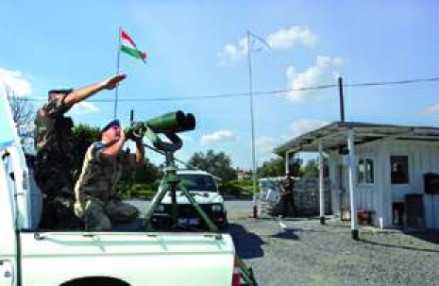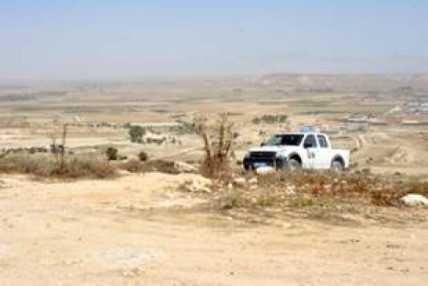Decades of Opposition
Szöveg: Béla Szabó | 2011. január 31. 10:38Cyprus. If we browse through holiday brochures, it looks like some island of love, a popular holiday destination for Hungarian tourists, but on reading the daily (political) news, it turns out to be one of the oldest crisis zones in the world, a scene of high political tension to this day.
To understand why passions run so high, we have to go back several decades. Cyprus became independent in 1960, on condition that the troops of the British armed forces continue to be stationed on the island. The constitution of the new state stipulated the share of power (70–30%) between the two nations living on the island – the Greek majority and the Turkish minority –, and to prevent Greek Cypriots from establishing closer ties with Athens, it prohibited annexation by Greece. This article of the constitution met with very strong resistance from Greek Cypriots, which was to be reflected in the increasingly violent actions carried out by their terrorist organization, the EOKA-B (Ethniki Organosis Kyriakou Aganos – the National Organization of Cypriot Fighters).

The Turkish Cypriots also heavily criticized the new constitution, being dissatisfied with the 30 per cent quota they had been granted in governmental bodies, the system of public administration and the military, and they demanded the same power as the Greeks. In December1963, only a few years after the historic agreement, ingrained hostilities reached breaking point. By excluding the representatives of the Turkish minority, Greek Cypriots led by Archbishop Makarios simply abolished the dual political system of the country and restricted the rights of the Turkish population in almost every field. After the new all-Greek government came to power, the situation of Turks in Cyprus deteriorated considerably. Due to the armed attacks of Greeks and being heavily outnumbered, many Turks had only one option left, namely to escape.
In March 1964, when it became obvious that British troops alone could not keep the situation under control, the UN Security Council offered to deploy its own peacekeepers. In accordance with UNSC Resolution No.186, between March and April 1964 a total of 6,369 UN troops deployed to the island from Finland, Sweden, the United Kingdom, Ireland, Canada, and Austria among other nations.
The UNFICYP (United Nations Peacekeeping Force in Cyprus) was responsible for preventing the recurrence of fighting in order to maintain international peace and security, restoring law and order and providing assistance with the process of returning to normal. The UNFICYP peacekeepers’ situation was rather complicated because while they were tasked with stopping the fighting between the opposing Turkish and Greek communities, they became entangled in the conflicts between the warring factions of Greek Cypriot political life.

In July 1974, in a coup led by Greek military officers, President Makarios was overthrown by nationalist Greek Cypriots. At the request of Turkish Cypriot leader Rauf Denktas, officially with reference to the 1960 constitution, Turkish troops landed in Cyprus, and during an operation lasting until August 16, they occupied almost 40 per cent of the island. Following the Turkish intervention, more than 200,000 Greeks living in the northern corner of the island had to leave their homes and to this day have been unable to return, as the Turkish authorities subsequently brought in tens of thousands of Anatolian Turkish settlers to occupy their homes and lands. Although the UN strongly condemned the action of the Turkish armed forces, Cyprus became permanently divided as a result of this intervention.
The ceasefire lines were drawn according to the positions occupied on August 16, 1974 at 6.00 pm., on the basis of which the buffer zone (Green Line) extending across the entire island was established, which is divided into three sectors for operational purposes. The UN had been supervising the ceasefire at 152 regular and temporary observation posts until 1989, the year when the terms of the ceasefire agreement were renegotiated. These basic documents provide for the monitoring of military construction works and the presence of armed forces, movement within the zone, civilian activities, etc. Reports on ceasefire violations are forwarded to proper levels of decision (from the observation posts to the UN HQ in New York) within a single reporting system, and the authorities seek to resolve each conflict at the lowest possible level.
Hungarians in UNFICYP
Since 1993, a contingent of the Hungarian Defence Forces has been part of the UN’s peacekeeping mission in Cyprus, which was set up more than four decades ago. In the first phase Hungary sent four military observers to UNFICYP, and since 1995 a military unit has been tasked with supervising the ceasefire, separating the opposing forces and maintaining peace in order to guarantee the development of the island. Slovak and Hungarian peacekeepers have been patrolling the eastern Sector 4 of the ceasefire buffer zone together since June 2001.

The Slovak–Hungarian commitment to the UNFICYP mission represents the next phase in the developing cooperation of the two armed forces, being a good example of the HDF’s efforts to establish mutually beneficial cooperation with Hungary’s neighbors which also serves to build trust and strengthen relations among allies. In October 2010, seven Serbian troops joined the Hungarian contingent in Cyprus: six of them have been serving in the Hungarian platoon, and one of them is posted as Deputy Chief Engineer (in September 2011 two Belorussian servicemen are expected to join the contingent).
The 84-strong Hungarian contingent (77 Hungarian and 7 Serbian troops) deployed in Cyprus is a core UNFICYP unit; the peacekeepers tasked with patrolling and observation are stationed in Camp St. István (located in the buffer zone) and at one of the patrol bases of a 75 km2 sector controlled by them. Their daily duties include, among others, maintaining the UN presence in practice, managing crowd riot control (CRC), preventing the opposing forces from engaging each other directly, mediating between the two sides and protecting minorities living in the buffer zone in the event of a crisis.
In order to prevent conflicts, the Hungarian peacekeepers are in daily working contact with the opposing sides and the representatives of the local population, but their duties also include the coordination of civilian (for instance farming and industrial) activities in the buffer zone. Several members of the Hungarian contingent hold senior and staff positions in the UNFICYP HQ in Nicosia, as well as in Famagusta (on the Turkish side), the headquarters of the Slovak–Hungarian–Croatian–Serbian Sector 4.

Even though we can say that these days the overall situation is stable, it seems that the presence of peacekeepers will be needed on the island for a long time. In most cases “ceasefire violations" nowadays mean indignation over shepherds trespassing on someone else’s land by mistake, pushing forward the walls of the buffer zone (mainly in Nicosia) (often by just a few centimeters!), and walls sprayed with provocative graffiti. Occasionally some protests are staged, and there are reports on “stray" fighter jets in the buffer zone. The fact that several decades of opposition between two NATO member countries (Greece and Turkey) and two EU member states (the Republic of Cyprus and Greece) must be treated in a “European way" adds a special twist to the situation.
It is promising that in recent years the Greek and the Turkish sides have made several attempts to defuse the situation, including opening a number of new crossings in the buffer zone separating the two nations.
Hungarian troops have been present on the island for seventeen years. Both sides, as well as the UN, are satisfied with their performance, and they have familiarized themselves with the country quite well. There are some who have spent more than four years on the island (in total); after completing their mission, many troops return with their families on a holiday, but I suppose on these occasions they can still recall those great many weeks and months spent at observation posts or on patrols.
Photo: Gábor Kálmánfi, György M. Tóth and archives